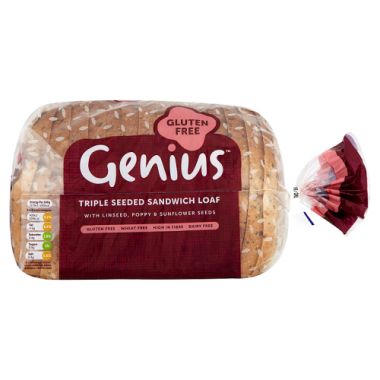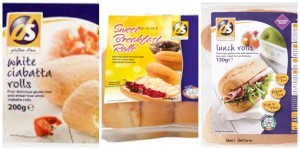Over the past 13 years, I have learned and adapted to living with someone with gluten intolerance. LSH is intolerant to both gluten and cows milk products, and it has taken me a lot of time, and effort to fine what works for him and us as a family.
One thing about gluten intolerance, is that common foods like pasta, bread, pastries, pizza, and many other things that we take for granted in a Western diet, are a huge no no. They are gluten based, and adapting a diet around not being able to have these things, or finding substitutes can be tricky.
If you are looking to try some bread substitutes for yourself, or family members, or someone coming to stay, or to make a meal for, we have some tried and tested brands, that we like and that work, for us.
We have tried and tests a lot of items, as a family. I personally eat everything I put in front of LSH and the children, and if it passed our rigorous taste testing then we make them part of our regular diet, and I recommend them to other people.
Bread is a staple part of many diets, and is a useful food. When I first met LSH there were very few gluten free bread products available, and those that were, were expensive and often the consistency and weight of a house brick and not very edible. I myself experimented with some gluten free recipes, with little success, and I know my Mother in Law has also struggled to find a good gluten free bread recipe over the years.
LSH went without bread for a long time, either skipping it entirely, or using rice cakes or oat cakes as a substitute. In the last five years, we have found and tried many brands of gluten free bread that have come on the market, from the very expensive, to supermarket own brands and now he can have toast, sandwiches and bread when he wants it.
Gluten free products are still more expensive, but they are becoming more competitive as the demand for them grows, so the prices are much more reasonable.
Our favourite brands of breads are Genius and DS Gluten Free.
We use the loaves of Genius bread for sandwiches and toast, and in fact most of the time, I use it for the whole family, rather than buying different bread types. It toasts beautifully, and doesn’t come out as dry and cardboard like in sandwiches. It comes in various varieties, white, brown and seeded. We probably use 2 loaves a week, on average. Our favourite is the seeded loaf. The slices are slightly smaller than your average “normal bread” slice, but we have got used to that. It is worth it to have decent bread that is suitable for a gluten free diet.
Whilst Genius also does rolls, if we want them, we prefer to us the DS Gluten Free brand. Their rolls seem to have more taste and a more roll like texture and the children like their breakfast rolls. If we are looking for a good roll substitute, these are what I usually buy.
All of these are pretty much readily available to buy in most of the bigger supermarkets and health food shops and can also be ordered on-line. If you would like to try and make a gluten free bread loaf, yourself, I have found that this recipe works quite well, but on a weekly basis, I tend to buy ready made bread, and only make my own when I have more time.
*This blog post is not medical advice, as usual, I would advise consulting with a qualified health practitioner, for advice on diets and food intolerance issues. These products may not be suitable for other gluten intolerance conditions, like Coeliac disease or those with a nut allergy. Please check all ingredients and product details before consumption.*


I agree the gluten-free bread is much better for toasting than not…Udi’s bagels are great though if you can get them 🙂
Thanks. I need to try Udi’s bagels, as I would love to be able to stop buying gluten ones. I have heard they are great! will see if I can find somewhere that does them, locally.